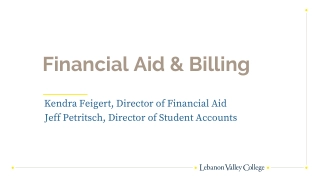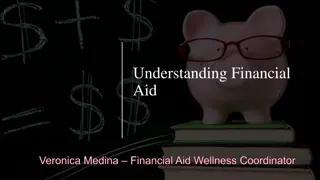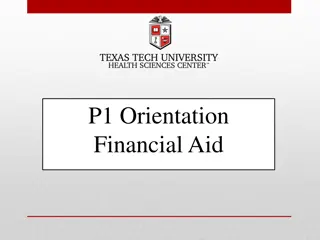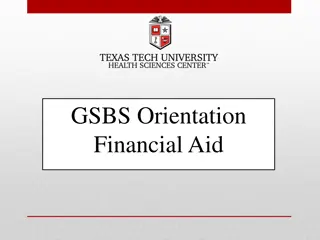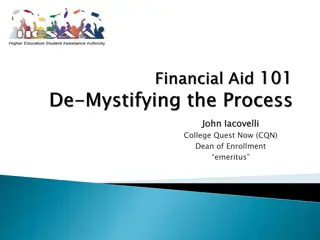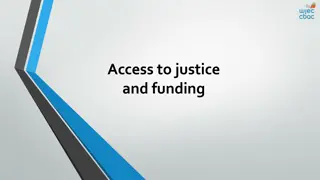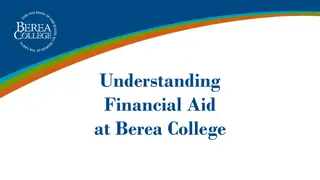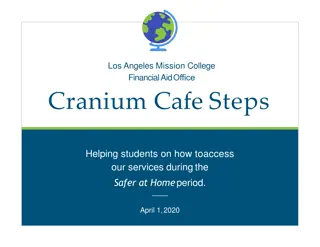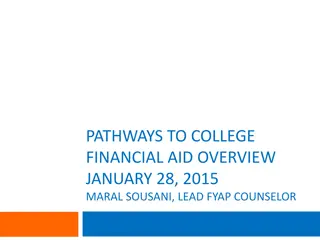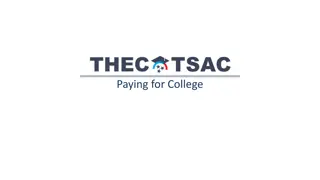
Understanding FAFSA Changes and Key Terms
Explore the significant changes and key terms associated with the FAFSA application process. Learn about updated terminology, submission details, contributors, personal data protection, consent requirements, and changes in Federal Pell Grant eligibility criteria.
Download Presentation

Please find below an Image/Link to download the presentation.
The content on the website is provided AS IS for your information and personal use only. It may not be sold, licensed, or shared on other websites without obtaining consent from the author. If you encounter any issues during the download, it is possible that the publisher has removed the file from their server.
You are allowed to download the files provided on this website for personal or commercial use, subject to the condition that they are used lawfully. All files are the property of their respective owners.
The content on the website is provided AS IS for your information and personal use only. It may not be sold, licensed, or shared on other websites without obtaining consent from the author.
E N D
Presentation Transcript
Key Terms and Changes With the Better FAFSA changes come many "vocabulary" changes, as well as new concepts. Let's work through some of the most important of these changes
Food and Housing Room and Board is now more clearly labeled as Food and Housing. In addition, all Food and Housing estimates must be based on 21 meals per week, AND the housing question is removed from the FAFSA.
Families Similarly, "households" now become "families". Hopefully, this more modern language will make the FAFSA less intimidating.
FAFSA Submission Summary The Student Aid Report, or SAR, is now the FAFSA Submission Summary. There is no acronym for this web-based document.
Contributors We now have FAFSA "Contributors". A contributor is an individual whose information is necessary to complete a FAFSA. Contributors may be students, parents, stepparents or spouses. An individual can have multiple contributor roles on multiple FAFSAs. For example, an individual might file a FAFSA as a student, then contribute information as a parent to another FAFSA.
Personal Data Each contributor can now only see their FAFSA information when they log in. Students can no longer see parental data when logged in as the student, and parents cannot see student data when logged in as a parent.
Consent Consent is a new concept with regards to FAFSA completion. Each FAFSA contributor will provide consent to use their data, especially their federal income tax data, on an annual basis.
Federal Pell Grant Eligibility Federal Pell Grant eligibility is now tied to income and enrollment level, and no longer includes assets in the eligibility determination.
Colleges & Universities Students may now list up to twenty (20) colleges and universities on their FAFSA. As in the past, individual colleges and universities cannot see the other institutions listed on the student's FAFSA.
Financial Aid Parents The determination of a student's "Financial Aid Parents" has changed. We now look to which parent has provided the most financial support to the student and ignore which parent the student lived with the most. Please see our separate Financial Aid Parent video for additional information.
Family Farms & Businesses As of today, students and parents must include the value of any family farms or family-owned business when reporting their assets on the FAFSA. There will be instructions included in the FAFSA to help families determine the necessary value to report.

